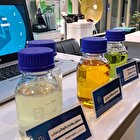New Miracle Polymer Heals Hearts after Attack

By targeting a protein interaction that normally inhibits recovery, the therapy protects crucial cellular processes and promotes tissue repair. Early testing in rats shows dramatically improved cardiac function, setting the stage for future studies and a potentially game-changing solution to one of medicine’s toughest challenges: preventing heart failure after a heart attack, the journal Advanced Materials reported.
Researchers have created a new injectable therapy designed to be administered shortly after a heart attack. Delivered through a vein, this treatment helps the heart heal and may significantly reduce the risk of developing heart failure.
The therapy works by activating the body’s immune system to support tissue repair, while also helping heart muscle cells survive the damage caused by a heart attack. In tests conducted on rats, the treatment remained effective even when given up to five weeks after the heart attack.
The research was led by bioengineers from the University of California San Diego and chemists from Northwestern University.
“Preventing heart failure after a heart attack is still a major unmet clinical need,” said Karen Christman, one of the study’s corresponding authors and a professor in the Shu Chien-Gene Lay Department of Bioengineering at the UC San Diego Jacobs School of Engineering. “The goal of this therapy is to intervene very soon after someone suffers a heart attack to keep them from ultimately going into heart failure.”
The platform behind the therapy could also be adapted to treat other serious conditions, noted co-author Nathan Gianneschi, a professor of chemistry at Northwestern.
“This therapeutic platform has tremendous potential for several diseases, including everything from macular degeneration to multiple sclerosis and kidney disease,” Gianneschi said.
The platform aims to block the interaction of two key proteins that intervene in the body’s response to stress and inflammation. When the protein Nrf2 is activated, cells resist the degradation brought on by inflammation. But KEAP1 binds with Nrf2 to degrade it in turn. After a heart attack, this process of degradation has to be stopped so that tissues can heal better.
The protein-like polymer, or PLP, platform is made from a polymer that mimics Nrf2. Once injected intravenously, it finds KEAP1 and binds to it, preventing it from binding to the actual Nrf2 protein and degrading it.
Researchers injected rat models after a heart attack with either the PLP platform or a saline solution. The team was blinded to which animals received the polymer or saline. After five weeks, the rodents underwent MRIs while sedated. The animals injected with the polymer showed better cardiac function and significantly more healing in their heart muscle tissue. Other tests also showed that genes that promote the healing of tissues were expressed more.
Researchers describe the study as a proof of concept. Before moving on to tests in larger mammals, they want to optimize the design and dosage, and conduct further analysis.
“Proteins are the molecular machines that drive all essential cellular function, and dysregulated intracellular protein-protein interactions are the cause of many human diseases,” Gianneschi said. “Existing drug modalities are either unable to penetrate cells or cannot effectively engage these large disease target domains. We are looking at these challenges through a new lens.”
4155/v





















